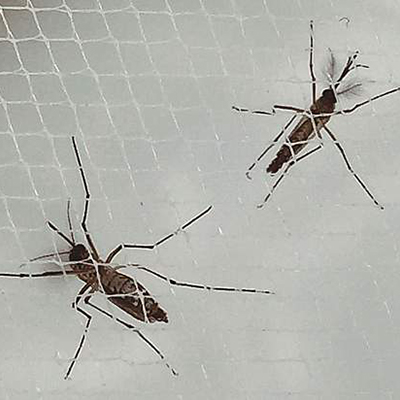Zika virus: the results of DNA vaccine experimentation in rhesus macaques

- Fig. 1. Aedes aegypti mosquitoes, spread out the Zika virus transmission
NIH’s National Institute of Allergy and Infectious Diseases (NIAID), in Maryland, developed two different Zika DNA vaccines in different doses, on rhesus macaques. Both experimental vaccines, called VRC5283 and VRC5288, were engineered to prompt cells to produce the Zika virus structural proteins premembrane (prM) and envelope (E). Both vaccines included portions of an unrelated virus to improve protein expression. VRC5288 also included another portion of an unrelated virus to improve secretion of virus particles from cells. The researchers vaccinated groups of rhesus macaques using the two different Zika DNA vaccines in different doses. Most animals received two vaccinations. Both vaccines were highly effective when given in two doses. VRC5288 is now being tested in a Phase 1 clinical trial, in volunteers in Maryland and Georgia. If the results are favorable, NIAID plans to initiate a Phase2 trial in Zika-endemic countries. The second vaccine (VRC5283) is awaiting a start date for a Phase 1 clinical trial.
Zika virus spreads mostly through bites from infected Aedes aegypti mosquitoes. It can also be transmitted through sexual contact (Fig. 1). or from mother to child during pregnancy or around the time of birth.
Most Zika infections cause no symptoms or a mild illness lasting about a week. In people, whom the disease develops in, the most common symptoms are fever, rash, joint pain and eye infections
These studies and others will inform the next steps of Zika vaccine development, were published on 23 August 2016 on “Science” paper. The results will guide efforts toward both the short-term goal of identifying an intervention to protect women of child-bearing age in the current outbreak, and the long-term goal of vaccinating the general population of endemic regions and travelers to those regions.
NATIONAL REFERENCE CENTRE FOR VETERINARY EPIDEMIOLOGY, PROGRAMMING AND INFORMATION AND RISK ANALYSIS (COVEPI)
Daniela Morelli
National Reference Centre for Risk Analysis
Armando Giovannini
Epidemiology
Paolo Calistri
Statistics and GIS
Annamaria Conte
EDITORIAL STAFF
e-mail benv@izs.it
fax +39 0861 332251
Cookie Policy
Coordination
Simona Iannetti
Francesca Dall'Acqua
Editorial board
Barbara Alessandrini, Annamaria Conte, Fabrizio De Massis, Armando Giovannini, Paolo Calistri, Federica Monaco, Giovanni Savini
Istructional designer
Alessandro De Luca
Web master
Sandro Santarelli
